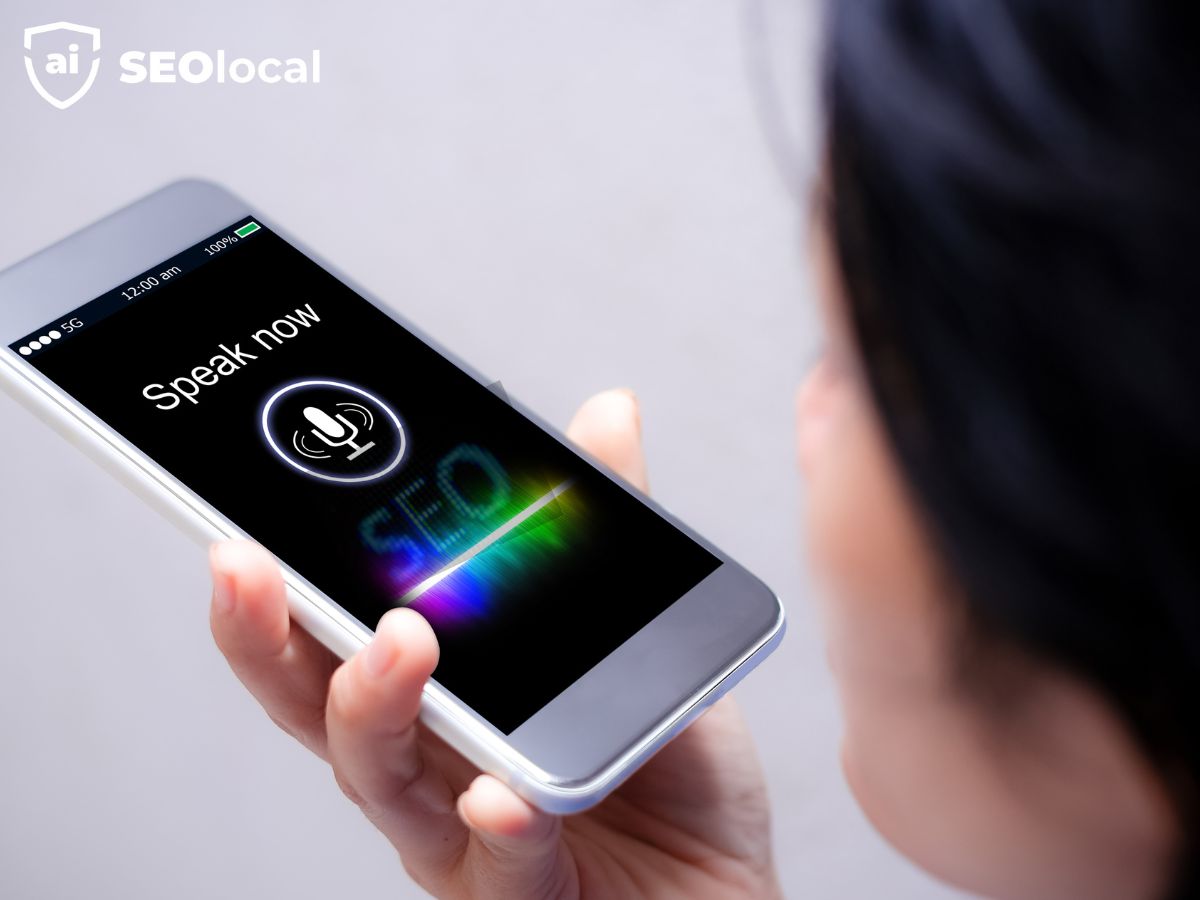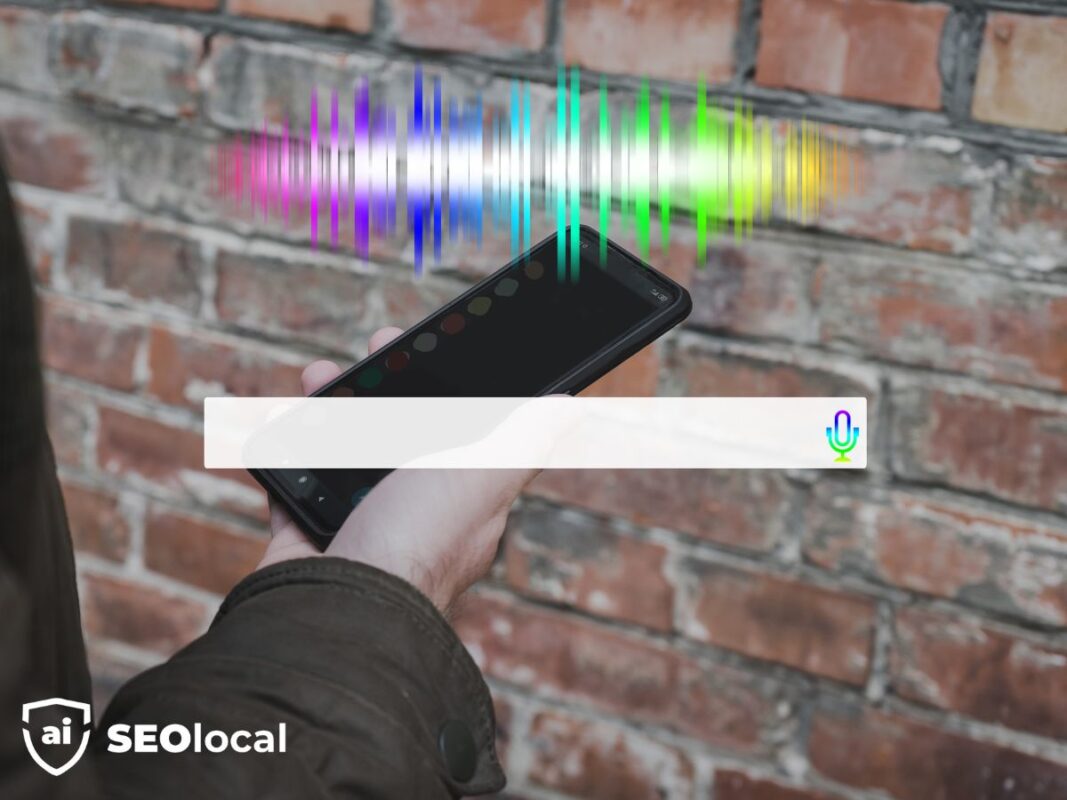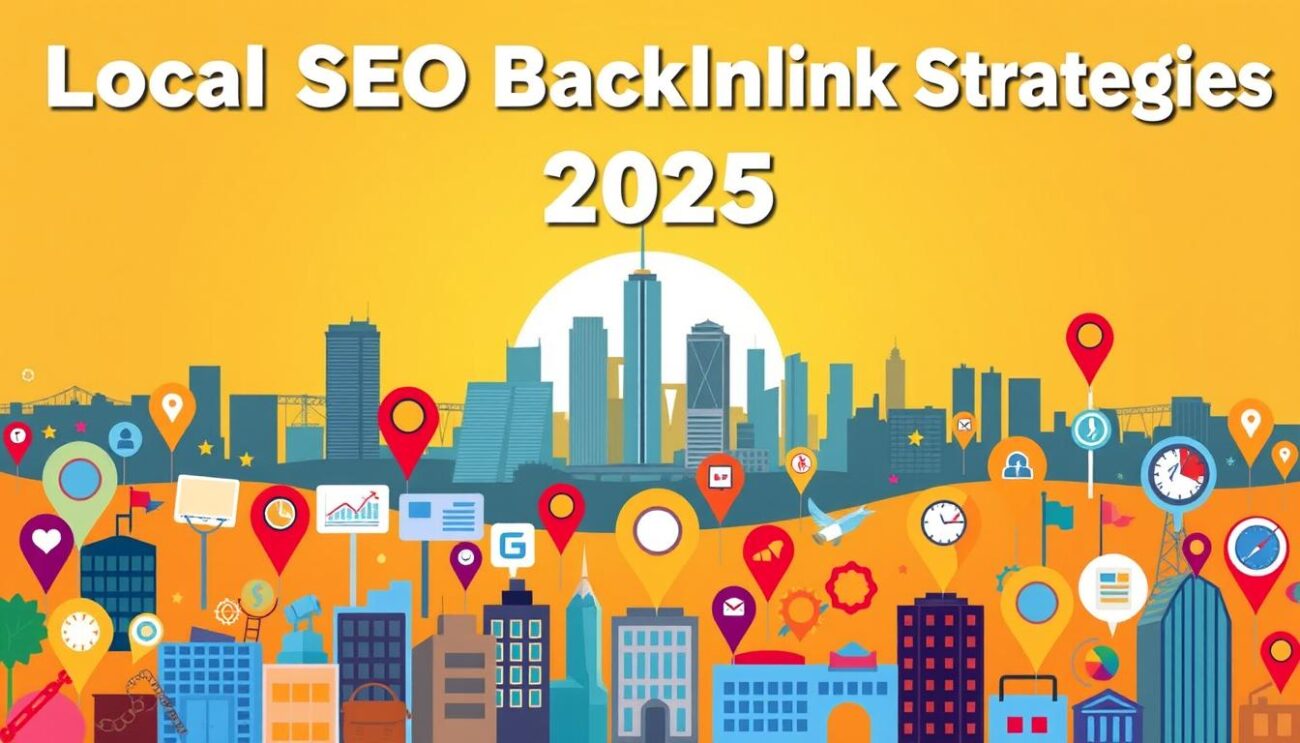- Advanced Local SEO Strategies
- Fundamentals of Local SEO
- Google Business Profile (GBP) Optimization
- Local Keywords and Content Strategy
- Local Link Building
- Local Paid Advertising
- Local Search Ranking Factors
- Local SEO Best Practices
- Local SEO Tools and Analytics
- Local Social Media Marketing
- Online Reviews and Reputation Management
- Technical SEO for Local Businesses
Advanced Local SEO Strategies, Fundamentals of Local SEO, Local SEO Best Practices, Technical SEO for Local Businesses
How Voice Search Is Changing Local SEO in 2025

Imagine asking your phone for the nearest coffee shop and instantly getting tailored results. This scenario is now everyday reality for millions. Over 20% of Google app queries today use spoken commands, reshaping how people find nearby services. The shift isn’t sudden—it’s part of a gradual evolution, like mobile tech’s journey from novelty to necessity.
Businesses must adapt to stay visible. Traditional keyword strategies struggle with conversational phrases like “Where can I buy organic groceries nearby?” These queries prioritize natural language and location-based intent. Platforms now reward content that mirrors how customers speak, not just what they type.
Tools like artificial intelligence refine how algorithms interpret requests. Geotargeting merges with voice-activated tech, creating opportunities for smarter outreach. For example, a bakery optimizing for “fresh croissants downtown” gains an edge over competitors relying on outdated methods.
Key Takeaways
- Over 20% of Google app searches now use spoken commands
- Conversational phrases dominate location-based queries
- Natural language processing improves result accuracy
- Geotargeting adapts to voice-driven discovery patterns
- Businesses must update content for spoken interactions
Understanding the Evolution of Voice Search
The way we ask questions online has transformed from staccato terms to flowing dialogues. This shift mirrors how humans naturally communicate, pushing tech to understand context and intent. Digital assistants now handle multi-layered requests, reflecting advancements in artificial intelligence.
From Text Queries to Conversational Searches
Early systems relied on rigid phrases like “weather Boston.” Today’s tools process full sentences such as “What’s the forecast for Fenway Park tonight?” ChatGPT’s 2023 conversation feature enabled back-and-forth exchanges, making interactions feel more human. Users increasingly expect platforms to grasp follow-up questions without repetition.
Milestones in Voice Technology
Device adoption skyrocketed as AI improved. Below highlights key developments:
| Year | Devices (Billions) | Key Development |
|---|---|---|
| 2019 | 3.25 | Smart speakers gain mainstream traction |
| 2020 | 4.2 | Mobile assistants handle routine tasks |
| 2023 | 6.8 | ChatGPT introduces dialogue mode |
| 2024 | 8.4 | LLMs refine answer accuracy |
Despite progress, many still use these tools for quick tasks like setting alarms. Complex requests remain an area for growth as tech continues evolving.

Voice Search and Local SEO: A Transformative Connection
Picture your customers speaking into their devices to find nearby solutions. Over 40% of spoken queries seek immediate, location-based answers. This creates a direct link between how people ask for help and how companies appear in responses.
Integrating Voice Search with Local SEO Strategies
Optimizing for spoken requests means focusing on phrases like “Where’s the nearest pharmacy open now?” instead of generic terms. These questions often include landmarks or time-sensitive needs. Tools like Google Business Profile become essential for sharing accurate hours and service details.
Geographic modifiers matter more than ever. A hardware store might target “emergency plumbing supply near Main Street” rather than “plumbing tools.” Structured data helps platforms understand your offerings, making it easier for assistants to recommend you.
The Impact on Local Businesses
Visibility in the local 3-pack determines who gets foot traffic. If your details aren’t updated, you’ll miss opportunities. For example, a diner with real-time breakfast specials could dominate morning queries.
Real-time availability also plays a role. Customers checking “Is XYZ Electronics open?” expect instant answers. Those micro-moments decide purchases, so consistency across directories is non-negotiable.
Optimizing Content for Voice Queries
Speaking to devices feels natural now, but optimizing for it requires strategy. Users expect instant, accurate responses phrased like everyday conversations. To meet this demand, your material must mirror real-world dialogue while delivering precise solutions.
Crafting Conversational and Accessible Content
Write how your audience speaks. Replace formal terms with phrases like “Where’s the closest…” or “How do I fix…”. Tools like AnswerThePublic help identify common questions in your niche.
Avoid technical jargon. Instead of “HVAC maintenance,” use “Why is my heater making noise?” This approach aligns with how people verbally seek help. Break complex topics into bite-sized explanations for better comprehension.
Securing Featured Snippets and Position Zero
Moz research shows 87% of spoken answers come from featured snippets. Target these blocks by structuring responses in a clear question-and-answer format. Start with “What is…” or “How to…” headings followed by concise 40-60 word explanations.
| Factor | Traditional Content | Voice-Optimized |
|---|---|---|
| Language Style | Formal keywords | Natural phrases |
| Answer Length | 300+ words | Under 60 words |
| Structure | Long paragraphs | Bulleted steps |
Update existing pages by adding direct answers to frequently asked questions. Use schema markup to highlight key details like prices or operating hours. This helps assistants quickly extract and share your information.

Leveraging Google Business Profile for Voice Optimization
What’s the first thing your customers hear when they ask for directions to your store? If your details aren’t properly listed, they might get outdated or incorrect answers. Over 60% of spoken queries for nearby services rely on verified profiles to deliver instant results. Optimizing your presence here ensures you’re part of those critical conversations.
Claiming and Enhancing Your Listing
Start by claiming your profile if you haven’t already. Unverified listings often miss out on appearing in the top three results for spoken requests. Fill every section—address, phone number, hours—to ensure assistants can relay precise details. Incomplete profiles frustrate users and lower visibility.
Photos and reviews boost credibility. Listings with ten or more images receive 200% more engagement. Respond to customer questions in the Q&A section to provide fresh, relevant data. Regular updates for holidays or special events prevent confusion during time-sensitive searches.
| Profile Feature | Optimized Listing | Incomplete Listing |
|---|---|---|
| Business Hours | Updated weekly | Default settings |
| Contact Info | Multiple methods listed | Missing phone number |
| Photos | 15+ images | No visuals |
| Services | Detailed descriptions | Generic categories |
Focus on accuracy. Even minor errors—like a misplaced comma in your address—can derail voice-driven navigation. Tools like Google’s profile manager let you track changes and monitor performance. Consistent updates keep your information reliable for both customers and algorithms.
Technical Considerations for Modern Voice Search
Your customers expect instant answers when they ask their devices for help. Meeting these demands requires technical precision. While conversational content grabs attention, your site’s backend structure determines whether algorithms can process and present your information effectively.
Mobile Compatibility and Structured Data
Over 70% of spoken queries happen through smartphones. Ensure your pages load in under two seconds and adapt to all screen sizes. Google prioritizes mobile-first indexing, so test your design using Core Web Vitals metrics.
Structured data acts as a translator for algorithms. Implement schema markup to clarify:
- Business hours and service areas
- Product availability and pricing
- FAQ sections addressing “how” and “why” questions
Utilizing Speakable Markup Effectively
Google’s experimental speakable markup helps assistants identify content snippets for audio responses. Though limited to U.S. English news publishers, its principles apply broadly:
| Markup Type | Use Case | Implementation Tip |
|---|---|---|
| Speakable | News articles | Wrap key answers in <div> tags |
| FAQPage | Service pages | Use JSON-LD formatting |
| HowTo | Tutorial content | Include step-by-step instructions |
While speakable markup remains in beta, focus on existing schema types first. Regularly audit your code using Google’s Structured Data Testing Tool. Technical adaptability ensures your content stays compatible as platforms evolve.
Connect with SEO Local
Adapting to modern discovery methods requires expertise tailored to evolving trends. Our team bridges technical precision with real-world customer behavior, helping you stay ahead in competitive markets. Let’s explore how we elevate visibility through targeted strategies.
Reach Out Via WhatsApp
Discuss your goals directly through WhatsApp at +1 786-840-9644. We analyze your current online presence and identify gaps in visibility. Personalized consultations focus on actionable steps to improve rankings and attract quality leads.

Our Approach to Excellence
We build strategies around three core pillars: technical audits, content alignment, and performance tracking. Every plan begins with understanding your unique market position and customer needs. For example, a bakery might need schema markup for seasonal menus, while a clinic requires updated service area data.
Sustainable growth comes from adapting to algorithm shifts without sacrificing stability. We prioritize solutions that deliver consistent traffic across devices and platforms. Regular reporting ensures transparency, so you see how each adjustment impacts your site’s performance.
Ready to transform your digital footprint? Connect today to explore customized techniques designed for measurable outcomes. Our methods evolve alongside industry standards, keeping your services competitive in an ever-changing landscape.
Conclusion
What defines success in tomorrow’s digital landscape? Adapting to how customers interact with technology remains critical. Conversational phrases now drive discovery, pushing businesses to prioritize natural language over rigid keyword lists. Structured data and mobile-friendly designs ensure platforms understand your offerings, while updated profiles deliver accurate answers during time-sensitive moments.
Featured snippets and local 3-pack visibility separate industry leaders from competitors. These opportunities emerge when content directly addresses user intent through clear, accessible explanations. Tools like FAQ pages bridge gaps between customer questions and your expertise, creating pathways for consistent engagement.
Technical foundations—from schema markup to geotargeting—support these efforts. They help algorithms interpret context, making your solutions easier to recommend. While devices evolve, principles like clarity and relevance stay constant.
Staying ahead means balancing innovation with practicality. Monitor emerging trends, but build strategies around proven needs: answering queries quickly, precisely, and conversationally. Those who master this balance will thrive as discovery methods advance.
FAQ
How has voice search evolved in recent years?
Voice technology now prioritizes natural language processing, allowing users to speak conversationally instead of typing fragmented keywords. Platforms like Google Assistant and Siri have improved accuracy, enabling longer queries and personalized responses based on location data.
Why is conversational language critical for online visibility?
People ask questions aloud differently than they type. Using phrases like “Where can I find…” or “What’s the best…” helps your content align with spoken requests. This increases the chance of appearing in results from devices like Alexa or smartphones.
What steps can businesses take to optimize their Google Business Profile?
Ensure your profile includes updated hours, services, and location. Use keywords customers might say aloud, like “emergency plumbing near me.” Regularly post updates and respond to reviews to boost relevance for queries like “top-rated electricians nearby.”
How does mobile compatibility affect voice search performance?
Over 60% of spoken queries happen on smartphones. Slow-loading pages or poor mobile design frustrate users, causing them to abandon your site. Optimize for speed, use structured data markup, and ensure buttons are easy to tap during on-the-go searches.
What role do featured snippets play in voice search results?
Devices often read the top snippet aloud as the answer. To secure this “position zero,” structure content with clear headers, concise answers to common questions, and bullet points. For example, “How much does a roof repair cost?” paired with a direct response improves ranking.
Can updating structured data improve local search rankings?
Yes. Schema markup helps engines understand your business type, address, and services. Adding speakable markup tags further signals content is voice-friendly. Tools like Google’s Structured Data Testing Tool ensure your code aligns with best practices.
How do platforms like Yelp or Bing Places impact voice optimization?
Listings on these sites contribute to your online authority. Consistent details (name, address, phone) across directories reinforce credibility. Voice assistants often pull data from multiple sources, so inaccuracies can lower your visibility for queries like “24-hour pharmacies.”
Should websites prioritize FAQ pages for voice queries?
Absolutely. Pages addressing common questions in a conversational tone are ideal for spoken searches. For example, “What’s the closest vegan restaurant open now?” matches how users speak. Pair answers with location-based keywords to attract nearby customers.
What metrics indicate successful voice search integration?
Track “near me” traffic, dwell time on FAQ pages, and impressions for long-tail keywords. Tools like Google Search Console show query patterns, while call tracking reveals how many customers found you through assistants like Bixby or Cortana.














